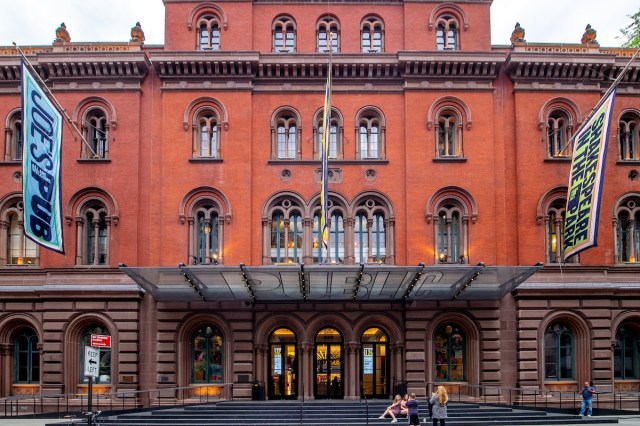Broadway Shockers: The Bell Tolls for America’s Imploding Not-For-Profit Theaters
2023 was the year the tide went out on America’s great theaters.

(© Ajay Suresh)
As 2023 draws to a close, TheaterMania looks back on some of the most jaw-dropping stories of the year.
In June, I reported that America’s not-for-profit theaters were in trouble. Oregon Shakespeare Festival was simultaneously facing a serious budget shortfall and executive tumult. LA’s Center Theatre Group suspended performances at the Mark Taper Forum and laid off 10 percent of its staff. BAM eliminated 26 staff positions, and the Public Theater discontinued its sponsorship of the Under the Radar Festival (it has since reemerged as a joint effort of multiple smaller companies). Two weeks after TheaterMania’s article came out, the Public laid off 19 percent of its staff.
Since then, off-Broadway companies have scaled back seasons (Signature Theatre has produced nothing this fall, beginning a three-show season in the winter). The Williamstown Theater Festival presented no fully staged productions this summer. Other organizations have folded, including the Metropolitan Playhouse and the New Ohio Theater. American Theatre has a comprehensive list of theaters that have shut down since 2020.
Why is this happening? The simplest answer is that revenue (from both ticket sales and donations) is declining while expenses only ever increase. Subscriptions are less attractive to theatergoers who aren’t ready to commit to a full season when they could just as well wait for a good discount to the show they specifically want to see. And donor priorities have changed since the Covid pandemic and racial reckoning of 2020, with many philanthropic institutions shifting focus away from the arts and toward social justice. In an internal memo, BAM President Gina Duncan justified the cuts to that organization saying they were necessary to “weather the downturn in charitable giving for the arts, and address an outdated business model that heavily relies on a shrinking donor base.” Reinventing that business model is the pressing mission of arts administrators in 2023.
All of this is coming at a time of generational change in the leadership of America’s major not-for-profit theaters. Longtime Roundabout Theatre Company artistic director Todd Haimes died in April. Carole Rothman of Second Stage and Andre Bishop of Lincoln Center Theater both announced their retirements in September. This turnover could be a good thing, ushering in a new crop of leaders who are not wedded to the old way of doing things. It could also herald the end of important donor relationships that had been maintained by a personal connection with the previous leadership and won’t be easily replaced.
It now seems clear that the pandemic relief money the federal government distributed to not-for-profit theaters only served to paper over deeper institutional weaknesses. And while there have been forlorn-hope calls for another federal bailout, on the slim chance Congress actually delivers, it would only postpone the inevitable reckoning American theaters must have with their own unsustainable business practices.
More theaters are destined to close in 2024, but my Christmas wish is that far more of them right the ship by raising revenue that does not come from the super wealthy or the government. Most immediately, that means selling tickets to shows audiences really want to see. This may feel like a betrayal of the not-for-profit mission, but one cannot produce ballsy, challenging drama if one doesn’t even have a theater. The priority of theater executives should be to ensure their organizations survive what is likely to be a tumultuous decade for the performing arts.









